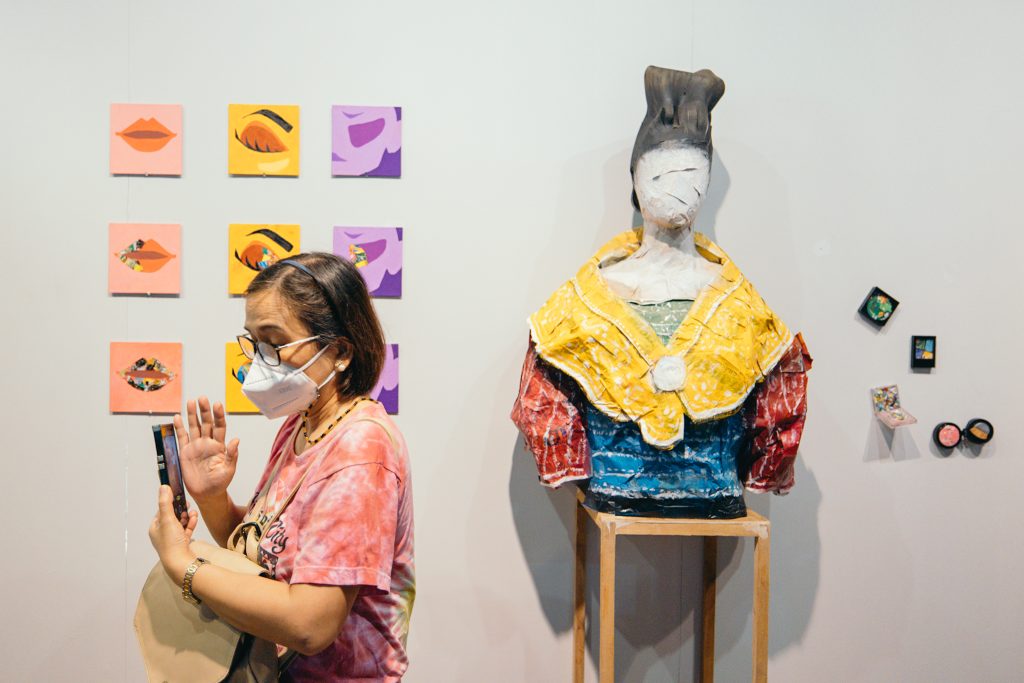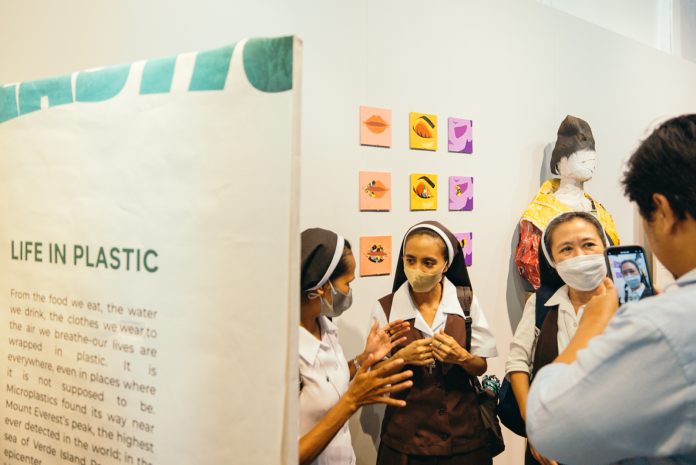A one-of-a-kind art exhibit promises to give viewers a multi-sensory experience of something we take for granted as a given in everyday life — plastic waste.
Launched on Wednesday, March 22, the mobile exhibit titled “Life in Plastic” is organized by Greenpeace Philippines, in collaboration with the Climate Change Commission (CCC), Miriam College Environmental Studies Institute (ESI), University of the Philippines Diliman Student Council (UPD USC), UP One Earth (UPOE), FASH, EARTH-UST and EcoWaste Coalition.
It is currently running at the Talyer 15 gallery in Henry Hotel Manila, and is open to the public free of charge.
“Life in Plastic” raises awareness on the worsening state of plastic pollution and how it affects quality of life.
Featuring interactive art pieces created entirely from plastic wastes recovered from past brand audits, the exhibit provides an immersive and multi-sensory experience, allowing guests to not only see the impacts of plastics, but also let them feel, hear, smell, and even taste them.
The art pieces are made in partnership with up-and-coming student artists from the Ateneo de Manila University and the University of the Philippines.
“Plastics started as a wonder product in the 50s and 60s. It brought a lot of convenience. But a few decades on, we’re now paying the price in the form of a degraded planet and toxic pollution that practically lasts forever,” said Greenpeace Philippines campaigner Marian Ledesma.
“Plastic has become so ubiquitous that the majority of its impacts escape the naked eye. Microplastics are in the food that we eat, the clothes that we wear, even in the air that we breathe. It’s everywhere,” she said.
“This is the goal of the ‘Life in Plastic’ art exhibit. More than seeing plastic wastes as the usual eyesores, it’s also putting the spotlight on the ‘invisible effects’ of plastics,” said Ledesma.
“It’s alarming, particularly because in reality we don’t have good policies that aren’t industry-aligned that can effectively regulate its production and use. We’d like to see the biggest corporations, who also happen to be the biggest plastic producers, experience how the packaging they produce disrupts lives and health. All the trash we see in this exhibit comes from them, and this is just a tiny fraction of the entire waste they produce annually,” she added.

Coinciding with the celebration of World Water Day, the exhibit also explores the presence of microplastics in drinking water, exacerbating the global water crisis.
Similarly, plastics pose a severe threat to the world’s waters, putting marine biodiversity at risk. Based on a recently published research, a rapid increase in marine plastic pollution has been observed, with over 170 trillion plastic particles covering the oceans in a ‘plastic smog.’
“Latest studies revealed that plastic pollution in the oceans is at an unprecedented rate,” said Coleen Salamat, Plastic Solutions Campaigner, EcoWaste Coalition.
“Plastic has also been found in the bottom part of the lungs, and even in our blood. Plastic does not only affect our oceans and food chain, but is also very alarming to our health. We have to create urgent and lasting solutions to end the plastic crisis,” she said.
Supported by academic institutions and youth organizations, the “Life in Plastic” art exhibit will be mounted in different schools in Metro Manila and in nearby provinces after its public opening.
The exhibit will make rounds in Miriam College, University of Santo Tomas, University of the Philippines Manila, University of the Philippines Diliman, Ateneo de Manila University, and De La Salle University Dasmarinas, with the goal of partnering with more schools nationwide.
“We must and can break free from plastics,” said Sister Marvelous L. Misolas, MM, executive director of Miriam College’s ESI.
The nun said plastic pollution “is one of the three planetary crises, along with climate change and biodiversity loss.”
“Everything is interconnected. Our reliance on fossil fuel is connected to plastic proliferation and mounting plastic pollution,” she said. – Greenpeace press release









